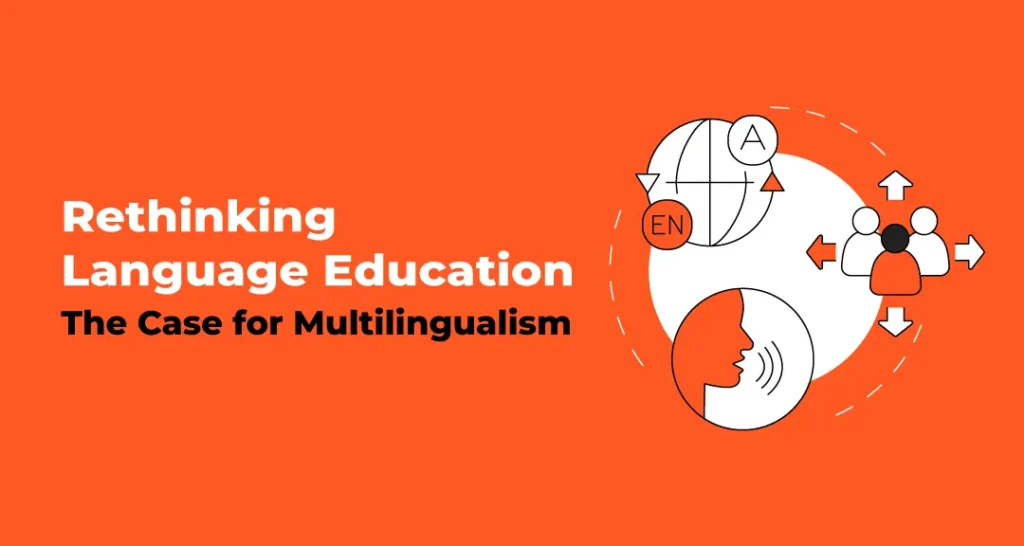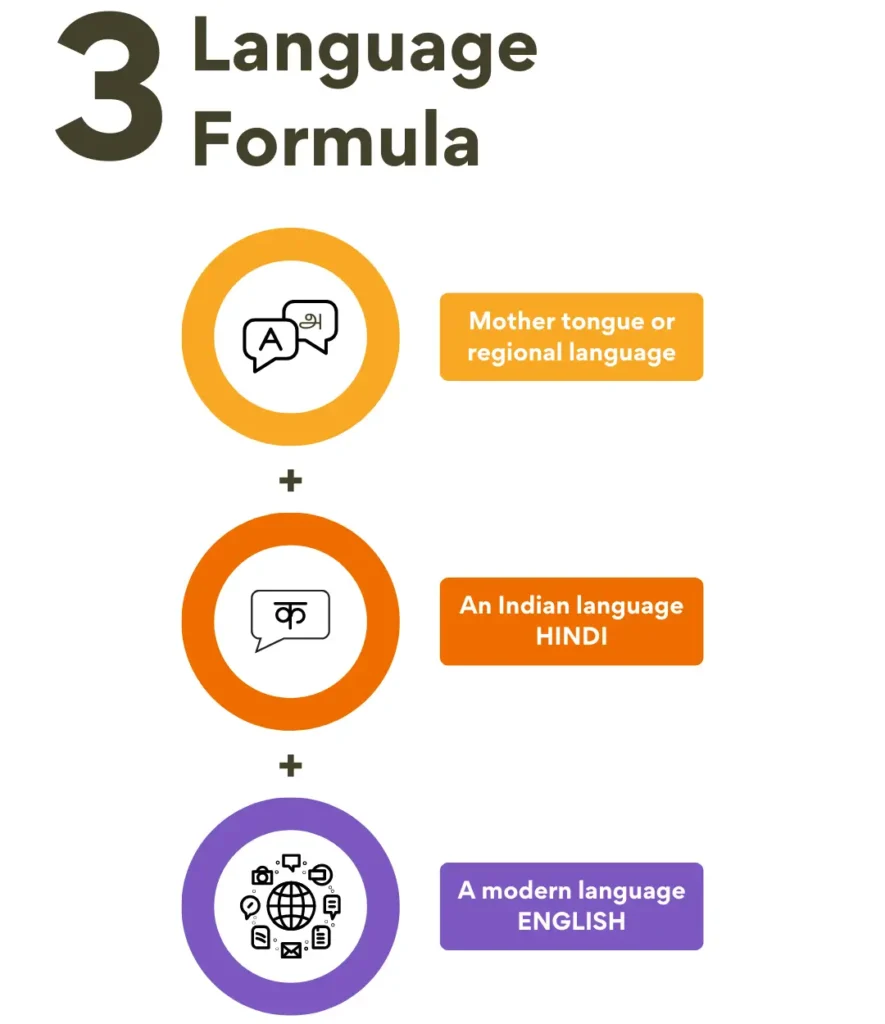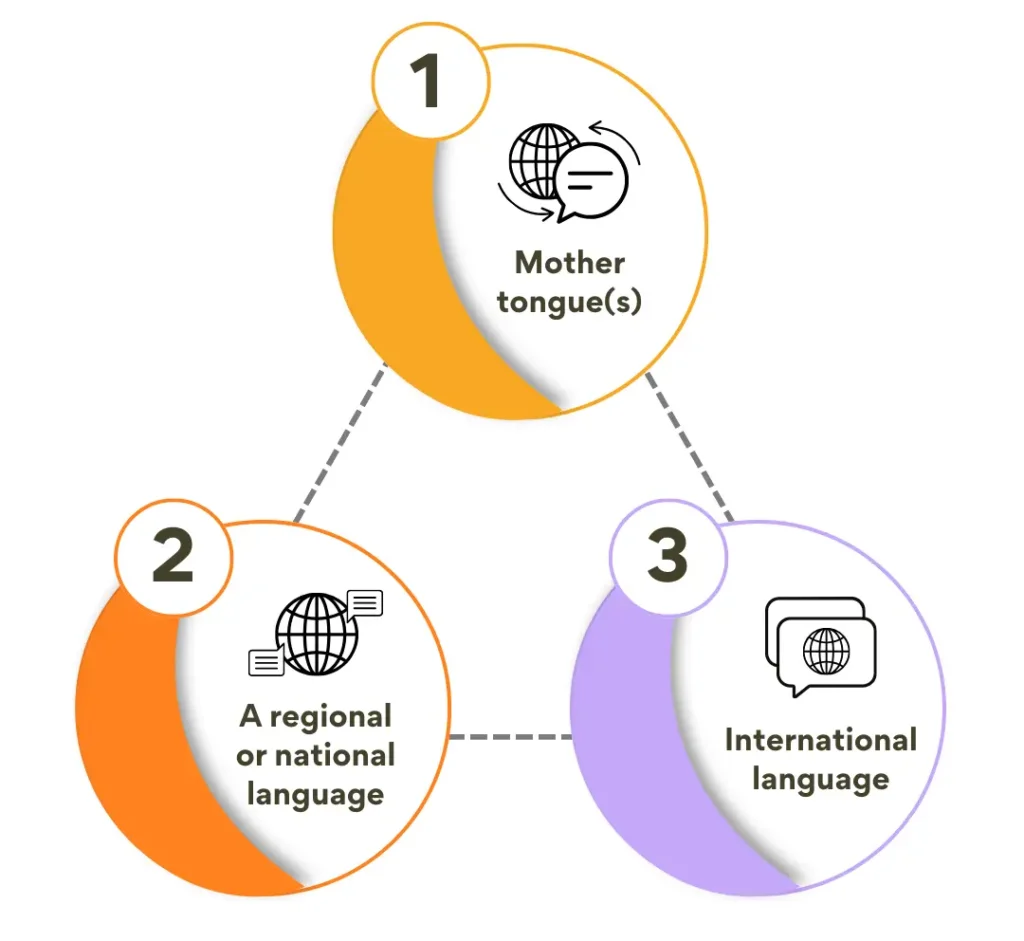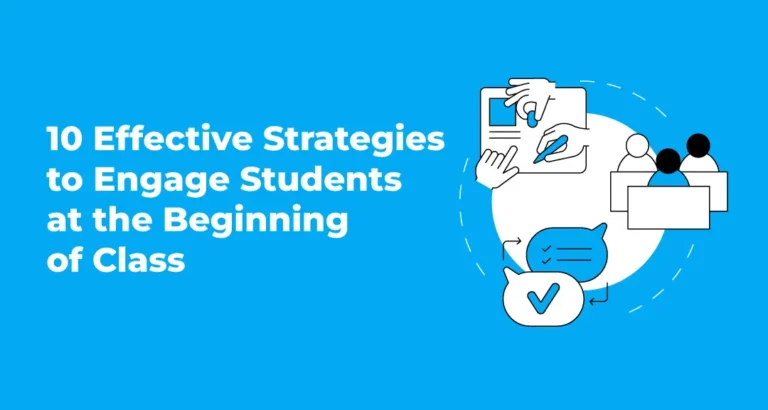Rethinking Language Education: The Case for Multilingualism
- School Leaders, Teaching
- March 29, 2025
- VOLT Learning

Imagine a child confidently switching between multiple languages—chatting with his friends in his mother tongue, answering a teacher’s question in Hindi, and seamlessly reading a story in English. That’s the beauty of multilingualism.
India has always embraced linguistic diversity, with its 121 languages spoken by over 10,000 people each. However, ensuring that regional languages thrive while schools prepare students for a globalized world has always been a serious challenge. That’s why Multilingualism came into the spotlight—it respects linguistic diversity by striking the right balance between the mother tongue and two (or more) languages or dialects for inclusive education.
Fast forward to today, and multilingual learning is well-recognized as a cognitive superpower. In a country with a vast population and limited resources, the serious problem many teachers face is: What should be the primary language of instruction? To many, English is often seen as a bridge to global opportunities, whereas Indian languages remain deeply connected to identity, heritage, and effective learning.
When embraced inside the classroom, multilingual education provides students with the best of both worlds by creating a robust educational system. It allows young kids to stay connected to local/regional languages while preparing them for global opportunities with practical communication skills, improved cognitive development, and better cultural understanding. No wonder that the National Education Policy (NEP 2020) also acknowledges the crucial relevance of multilingualism in schools through English and local languages.
But how do teachers turn multilingualism, NEP 2020-aligned education into a meaningful and engaging student experience? This blog explores practical challenges and quick multilingualism strategies to encourage inclusive learning in the classroom. Before we go any further, let’s take a moment to understand why multilingualism matters in India and how it plays a key role in making education more inclusive.
Why Does Learning Multiple Languages Matter? Revealing the Multilingual Education Benefits
Multilingualism under NEP 2020 marks significant “technological, social and educational” progress in the Indian ecosystem by encouraging schools to teach English and multiple languages native to India. The impact—the “Three-Language Formula”—can impact students’ overall development, both academically and personally.

The Three-Language Formula is a well-recognized educational approach for Indian schools that was introduced to support a multilingual learning experience. The idea is to balance regional (mother tongue), national, and global linguistic requirements necessary for the child’s development. It was introduced in the National Policy on Education (1968) and later reaffirmed by the National Education Policy (2020) to encourage linguistic harmony and cognitive development among students inside the classroom.
With the New Education Policy (NEP) 2020, the Three-Language Formula remains in place but with greater flexibility. Schools and states can decide which languages to offer, emphasising learning in the mother tongue or home language, especially in the early years. This approach ensures inclusivity while preparing students for both national and global opportunities.
The Three-Language Formula supports national integration and works as a foundational step to strengthen cultural identity and enhance cognitive abilities through multilingualism. When such inclusive learning approaches are embraced inside the classroom, students develop improved communication skills and self-confidence to adapt to a globalized world.
Let’s have a closer look at the key benefits of Multilingualism education:
1. Boosts brain power
Learning a new language functions similarly to mental exercises at a gym. Research suggests that kids who can communicate in multiple languages develop stronger brains because language transitions strengthen their memory, focus abilities, and problem-solving performance. Multilingual children demonstrate superior multitasking abilities and focused attention because their brains continuously switch between languages, enabling Bilingual individuals to enjoy the advantage of slower cognitive aging.
2. Builds cultural awareness and empathy
Language is more than just a way to communicate—it’s a window into a culture, its traditions, and its thinking. When students learn multiple local/regional languages, they also develop a deeper understanding of different communities.
Kids with bilingual capabilities tend to be more open-minded and empathetic because they’re exposed to different ways of expressing ideas. Imagine a child who speaks Tamil, Hindi, and English—they can appreciate poetry in three languages, enjoy folk tales from different cultures, and easily relate to people from various backgrounds. At a time when cultural sensitivity is more important than ever, multilingual education that rests peacefully on the “Three-Language Formula” helps students develop a global mindset while staying rooted in their own heritage.
3. Gives students a competitive edge in their careers
Multilingual knowledge involves more than basic verbal skills because it allows students to understand their environment better. Students will develop the ability to understand great books, research materials, and educational resources available in different languages.
Additionally, multilingualism boosts their confidence in new environments. Whether traveling to a new place or participating in an exchange program, multilingual students feel more comfortable communicating and adapting to different cultures. The credit goes to their ability to process other languages—all of this helps them grow into well-rounded and confident individuals with new experiences.
How Can Teachers Encourage Multilingual Learning?
Now that we know why learning multiple languages is so beneficial, the big question is: How can we make it fun and engaging for kids? Schools have unique opportunities to empower students through multilingual education and prepare them for a future where adaptability, cultural understanding, and global communication are key skills.
Teachers in schools can make the journey of multilingualism engaging by following the below-discussed fun activities and best teaching strategies:

1. Turn learning into an experience
Forget about boring grammar drills! The best way to learn a language is to let kids experience it. Teachers can always make language learning sessions interactive with storytelling. As we all know, children love stories, and hearing them in different languages helps them recognize similarities and differences in sentence structures and vocabulary.
Bonus Tip: Read a story in English, Hindi, and another Indian language, like Bengali or Tamil. Ask students to find common words between them!
Teachers can also capture students’ attention with music, rhymes, and poems because kids can remember song lyrics effortlessly but struggle with textbook lessons. Music activates memory in a way that traditional learning doesn’t. Songs, rhymes, and poems help children grasp pronunciation, rhythm, and fluency without realizing they’re learning. Teaching familiar songs in multiple languages is a great way to introduce new languages.
Classroom activity idea:
Imagine students singing Twinkle Twinkle Little Star in Hindi, French, or Bengali—it reinforces the same concept while expanding their linguistic abilities.
Teachers can engage students in a “Sing and Learn” challenge, where they sing songs or rhymes in different languages while discussing those musical pieces with one another. Students participating in this exercise gain better vocabulary control and strengthened communication skills in foreign languages.
What else? Role-playing and real-life scenarios can be another interesting way of introducing kids to multiple languages. Children learn best when they can apply their knowledge in real-world situations. That’s why role-playing is a powerful tool—it helps them practice languages in context, making learning feel relevant and natural.
Teachers can transform classrooms into mock international markets. Students are divided into groups of maybe three, and these small groups may be engaged in a game of “ordering food in French or negotiating the cost of any item in Hindi or asking for directions in Spanish.”
Beyond the classroom, schools can host a “Multilingual Day,” where students take on different roles—shopkeepers, travelers, or teachers—and interact using multiple languages. These real-life simulations build fluency, confidence, and cultural awareness while making language learning exciting and hands-on.
2. Creating a multilingual environment in schools for active participation
The best way to help students embrace multilingualism is by making languages a part of their daily routine rather than something they only study in a classroom. Schools can create language-rich environments by setting up language clubs to provide a safe space for students to practice speaking with peers and native speakers. These clubs can organize:
- Language exchange programs where students teach each other new words
- Storytelling sessions in different languages
- Fun activities like language trivia, debates, or poetry slams
For example, imagine a “Spanish Wednesdays” initiative where students greet each other and use basic Spanish phrases throughout the day. Small steps like these boost confidence and encourage everyday language use.
Another interactive way to encourage multilinguist education inside the classroom can be bilingual instruction for other subjects, wherein students participate to teach science concepts in both English and Hindi (e.g., explaining the “water cycle” as “जलचक्र”). They can use bilingual flashcards to solve math problems, or students can summarize historical events in different languages.
Example: A child in India might watch their favorite TV show in English on weekdays and Hindi on weekends, making language learning effortless and natural.
3. Bringing multilingualism learning to life with interactive digital resources
Technology has transformed how students learn languages, making the process more interactive, engaging, and accessible. Instead of rote memorization, digital enablers like VOLT Learning offer a dynamic approach that keeps students interested while strengthening their language skills.
VOLT Learning is a one-stop platform where teachers can access books, workbooks, and interactive materials to turn traditional lessons into exciting learning experiences. Here’s how VOLT Learning makes multilingual education easier:
- Story-based lessons help students naturally pick up new words through an immersive storytelling experience rather than relying on repetitive vocabulary drills.
- Gamified learning modules like quizzes, workbooks, and puzzles expose the kids to an interactive challenge that makes learning sessions like an adventure while reinforcing language concepts.
With VOLT Learning, teachers can make the journey of learning multiple languages easy and engaging without making students feel overwhelmed. Of course, when kids are exposed to the confidence-building experience inside the classroom, they carry that confidence beyond the classroom—communicating effortlessly, thinking more creatively, and embracing new cultures quickly.
Tip for Teachers: Use VOLT Learning's pre-designed worksheets for an inclusive learning session in a classroom and assign fun language games for homework so kids can learn at their own pace.
Conclusion: The Future Belongs to Multilingual Thinkers
Language isn’t just a subject—it’s a bridge to new cultures, fresh ideas, and deeper connections. When students engage with multilinguist learning sessions in a fun, interactive, and immersive way, they develop creative thinking, stronger communication skills, and a more adaptable mindset.
>> Please Share



